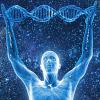When understanding the aging process we need to look at multiple, both related and independent mechanisms that are at work. One of the most impactful aspects of the aging process is how the loss of mental capacity relates to the quality and the quantity of life. This article addresses evidence for an alternative understanding of what is happening to the brain as it ages but doesn't really address the causal aspects.
This is an instance where there might be a confusion of correlation and causality.
https://neuroscience...transfer-10945/
NEW PATTERN OF BRAIN AGEING IDENTIFIED
Neuroscience NewsNEUROSCIENCE NEWSMARCH 28, 2019ELECTROPHYSIOLOGYFEATUREDNEUROSCIENCE
Summary: New patterns of brain ageing across the human lifespan have been revealed by researchers analysing microstructural changes in the brain’s white matter.
Source: Goldsmiths, University of London
Dr Marinella Cappelletti from Goldsmiths, University of London, University of Oxford’s Dr Vyacheslav Karolis, and colleagues, mapped and analysed myelin content in the brains of almost 100 healthy adults aged 20 to 74.
A report on their research is published in the journal Neurobiology of Ageing.
Myelin is a substance that wraps around nerve fibres, increasing the speed of electrical communication between neurons. Its light colour gives a name to the brain tissue known as white matter – a collection of fibres which connects distant brain areas. Myelin loss, through normal ageing or through disease, typically causes neurological dysfunction.
Using magnetisation transfer concentration (a brain imaging marker sensitive to myelin content), the research team mapped myelin content across the brain in people of different ages and demonstrated that healthy ageing is not a steady, or uniform, process.
Dr Karolis et al have also identified a new pattern of brain ageing which shows that regions of the brain’s white matter that are more lateral (toward the side) start declining from about the mid-40s, although the decline is relatively slow.
In contrast, white matter in the ventral, or deeper, areas of the brain showed relatively stable myelin levels until around the late-50s, at which point age-related changes appear, and decline continues quite rapidly. The researchers have termed this pattern the lateral-to-ventral gradient of ageing.
They also found a moderate ageing effect in the temporal lobe, an area of the brain often associated with neurodegeneration (the loss of structure or function in neurons); this suggests that brain regions which show myelin loss in healthy ageing are different from those showing pathological changes.
Dr Cappelletti said: “The study provides a closer link between developmental and ageing processes. The ventral-to-lateral sequence has previously been observed in the process of myelin development with myelination progressing from deep to lateral areas. Here we show a clear reversal of this pattern in ageing, and provide benchmark data which may help to distinguish between healthy and pathological ageing, and also highlight the importance of looking at ageing from mid-life.”

















































